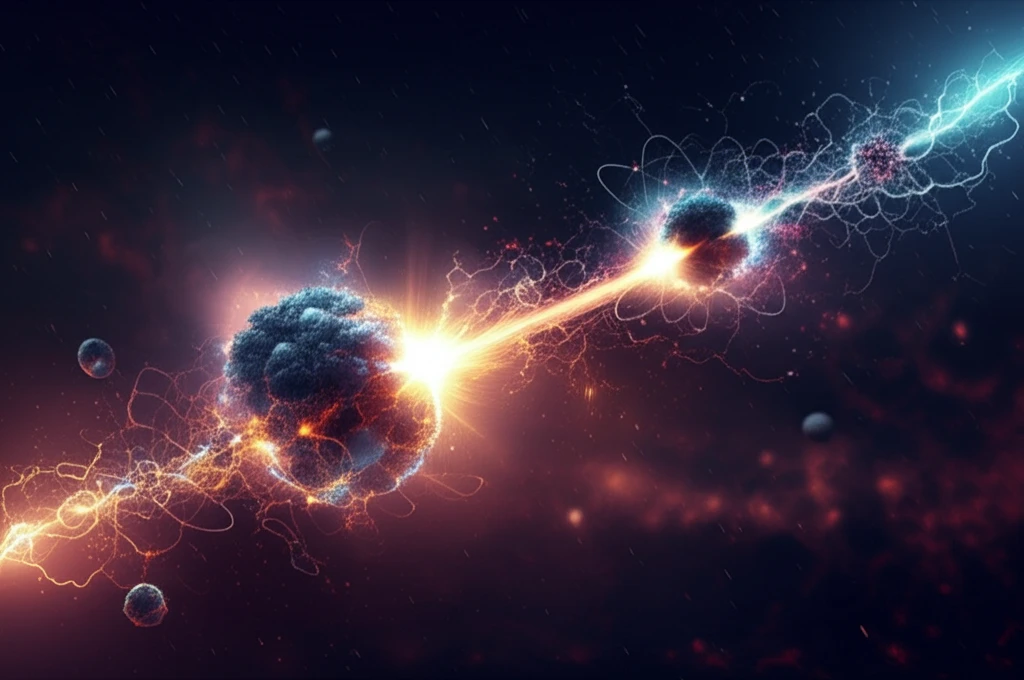
Unlocking Nuclear Fusion: How Understanding Atomic Breakups Could Revolutionize Energy
"Scientists explore the complex interactions of lithium isotopes and magnesium to pave the way for sustainable fusion power."
For years, the promise of nuclear fusion as a clean and virtually limitless energy source has captivated scientists and policymakers alike. Unlike nuclear fission, which splits heavy atoms, fusion involves forcing light atoms to combine, releasing tremendous energy in the process. However, achieving sustained and efficient fusion remains one of the greatest scientific challenges of our time. A key aspect of this challenge lies in understanding how the structure of the atoms involved affects the fusion process, particularly when weakly bound nuclei are involved.
Weakly bound nuclei, such as isotopes of lithium, are particularly prone to breaking apart when they interact with other atoms. This breakup process can significantly influence the outcome of fusion reactions, either enhancing or suppressing the likelihood of fusion. Recent advances in radioactive beam technology have allowed scientists to study these effects in more detail, but the complexities of these interactions require sophisticated theoretical models and experimental techniques.
One area of particular interest is the study of fusion reactions involving lithium isotopes and magnesium. These reactions provide a valuable testing ground for theoretical models that aim to describe the role of breakup processes in fusion. By carefully analyzing the fusion cross-sections – a measure of the probability of fusion occurring – scientists can gain insights into the fundamental forces at play and refine their understanding of how to achieve efficient fusion.
The Role of Breakup Coupling in Lithium-Magnesium Fusion

The research focuses on the fusion of lithium-6 and lithium-7 isotopes with magnesium-24. These reactions are studied within the Continuum Discretized Coupled Channels (CDCC) framework, a sophisticated theoretical approach that accounts for the possibility of the lithium nuclei breaking up during the interaction. The CDCC method uses the FRESCO code, a powerful computational tool for modeling nuclear reactions.
- Fusion Cross-Sections: A measure of the likelihood of a fusion reaction occurring.
- CDCC Framework: A theoretical method that considers the breakup of weakly bound nuclei.
- FRESCO Code: A computational tool used to model nuclear reactions.
- Breakup Coupling: The interaction between the breakup channels and the fusion process.
The Path Forward: Refining Models and Understanding Underlying Mechanisms
While the CDCC calculations provide valuable insights, the discrepancies observed, particularly for the lithium-7 + magnesium-24 system at higher energies, highlight the need for further refinement of the theoretical models. One possibility is that nucleon transfer – the exchange of protons or neutrons between the lithium and magnesium nuclei – plays a more significant role than currently accounted for. These transfer processes can trigger breakup, further complicating the fusion dynamics. More detailed experimental investigations are needed to determine the relative importance of different breakup mechanisms and their influence on the fusion process. Ultimately, a deeper understanding of these complex interactions will pave the way for more accurate models and, potentially, for optimizing fusion reactions for energy production.
